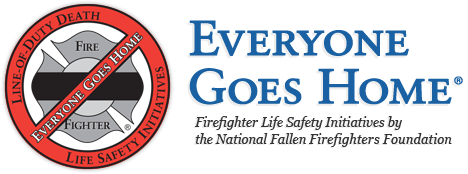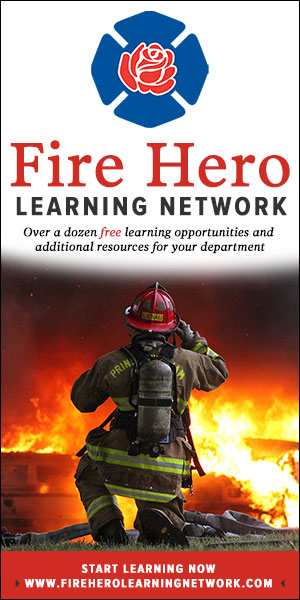
‘The very nature of violent crime
makes these incidents difficult to predict.’
What was a simple closing line in the National Fallen Firefighters Foundation (NFFF) 2007 white paper on the fire service’s response to violent incidents has now become a frequent topic in fire station conversations, emergency incident scenes, and after action reports. We don’t know when, where, or how an incident of violence will occur. Recent events in New Jersey, Colorado, Washington, New Orleans, and Minnesota do affirm the trend. If this type of tragedy visits your community, are you ready?
Reviewing the recent attacks in Paris, or the 2008 Mumbai rampage, or even the 2009 Fort Hood shooting it is easy dismiss them as ‘not going to happen in my town, because…(Insert, we aren’t a big city, ISIS isn’t coming here, we’re not a military installation, we don’t do EMS etc….). All of those things may be true, but it doesn’t exempt you from an active shooter-mass casualty event occurring in your community.
Do not be lulled into a sense of complacency. Whether driven by mental illness, rage, revenge, social or societal issues, or a home grown violent extremist wishing to forward their agenda, a mass shooting can occur in your community.
When such an event does occur, it is highly likely that your fire department will respond and operate. One constant in each of the recent mass-shootings in the United States is a fire apparatus parked at the scene. Every time. If we can agree that the event may occur and that we will respond, then we must ensure we are prepared for what we may find.
When developing its 16 Firefighter Life Safety Initiatives, the NFFF noted the risk firefighters face as they respond to acts of violence as Initiative 12. This acknowledgement lead to the development of a white paper in 2007, a final paper in 2013, and the creation of a 90 minute training program on fire service response to violent incidents. Each is valuable and should be on your short list for materials to read as you prepare your department. In the interim, take a few minutes to consider the nine questions contained in the sidebar article.
While each of the nine items is critical, a couple stand out as imperative.
First, the response to violent incidents must be well coordinated with local law enforcement personnel. From the boss level (Chiefs) to street level operational personnel, the operational expectations, framework, and tempo must be shared between law enforcement and fire and EMS personnel. Ideally, this is rooted in a community conversation about what we expect our responders to do. However, even without pre-event planning, a ‘game day’ decision must be made, agreed upon, and communicated as to what each agency will do and the level of risk they are willing to accept. This conversation should include everything from dynamic risk assessment and size up to incident management, to ensuring you have a plan to manage/inform/weather the media response to your incident. This type of critical incident is not the time or place to try and do something neither organization has ever attempted or is not prepared to execute.
Next, the research is clear: the more quickly you stop the bleeding, the more likely the victim will survive. While this seems over simplistic, it is the foundation for increasing the survivability of an active shooter mass-casualty event. Stopping the bleeding at the point of wounding, as quickly as it is safe to do so, increases the likelihood of survivability for the victim.
The challenge comes from defining ‘as quickly as it is safe to do so’. In some systems a unified effort between law enforcement and fire/EMS places members into the hazard zone to begin treatment as soon as an area is cleared of threats (bad guy). Absent specific training, equipment, and operational methods, this type of response may have a risk threshold above the tolerance level of many organizations. However, it will result in an increase of survivability.
A recent and disturbing trend is the ambush of emergency responders. From the hostage taking of firefighters responding to a medical emergency in Georgia, to the attacks on fire personnel in West Webster and now LeRoy, New York, ‘ambush’ type shooting events appear to be more prevalent. This type of event is perhaps even more difficult to prepare for than a mass-casualty active shooter incident. Ensuring call-takers obtain and pass along as much information as possible can aid in response awareness.
Holding or lagging one member ‘behind’ at the apparatus can help ensure not all members are at risk of hostage taking at calls within dwelling units or other structures that are remote or singly occupied. Quickly reacting to gunfire, relaying the information to other incoming units, and taking a position of cover are some methods to react to taking gunfire at a response. While an uncomfortable concept for a service not known for ‘retreating,’ altering your tactical position away from the scene, or simply leaving, may be the only tactic you can apply.
The amount of research on the subject of active shooter-mass casualty events continues to grow. It is incumbent on each of us to study the research and adopt and adapt the outcomes to improve the effectiveness, efficiency, and yes, safety of fire department operations at active shoot-mass casualty events.
It does not appear that the active-shooter mass casualty event likelihood has abated. As long as this threat exists, as well as those related to day-to-day acts of violence, the fire service must maintain its preparedness and operational capability.
Are you ready?
Here are some resources for preparing for violence:
- Are you ready to respond to a violent incident?
- Improving Active Shooter/Hostile Event Response
- Active Shooter and Complex Attack Resources One-Pager
- Interagency Response Protocol to Active Shooter Incidents
- Firefighter Life Safety Initiative 12 Final Report
- Initiative 12 White Paper
- Firefighter Life Safety Initiative 12: Violent Incident Response


